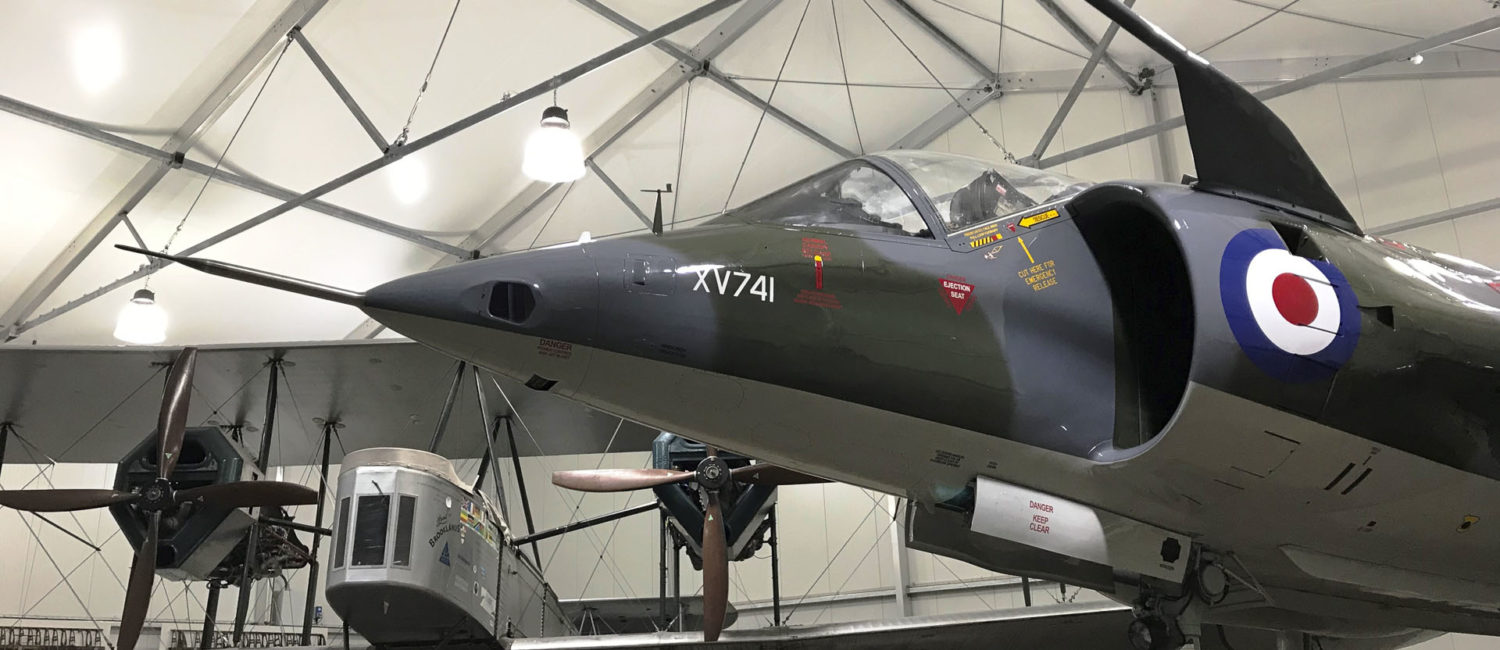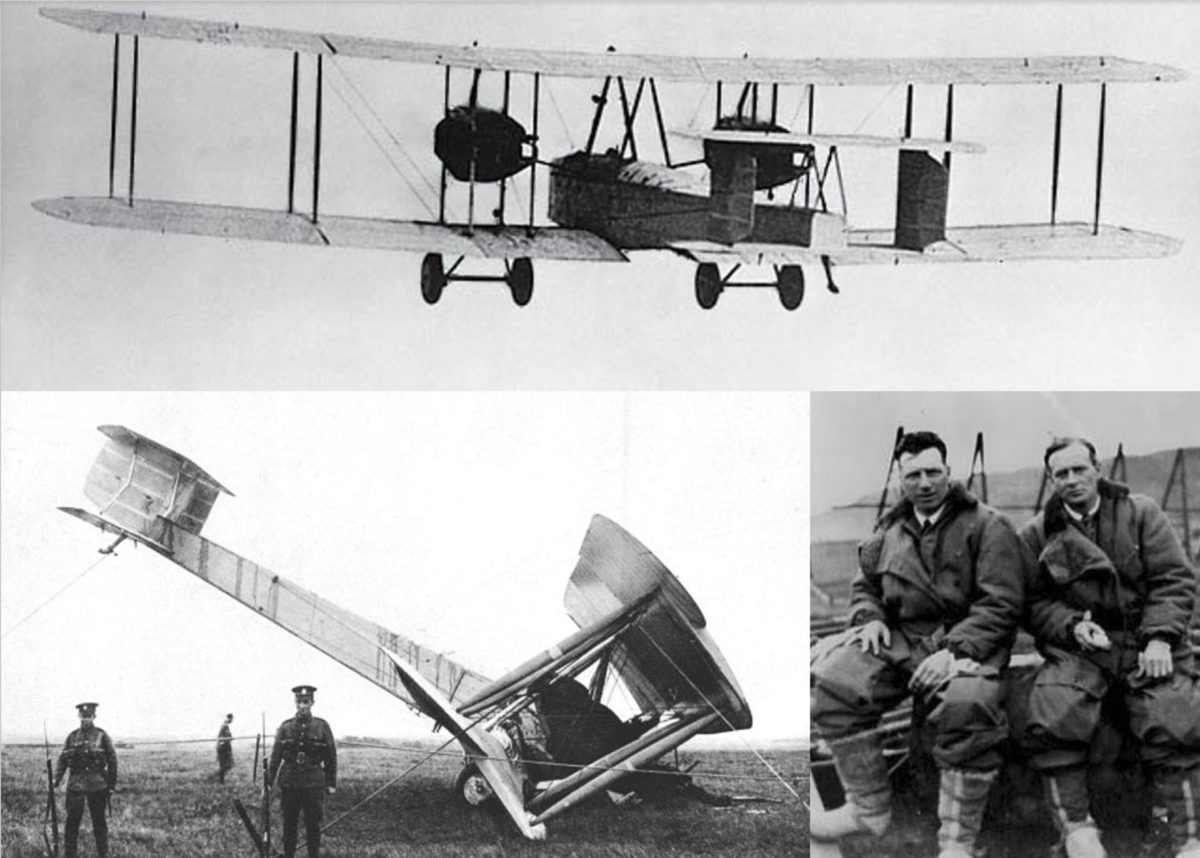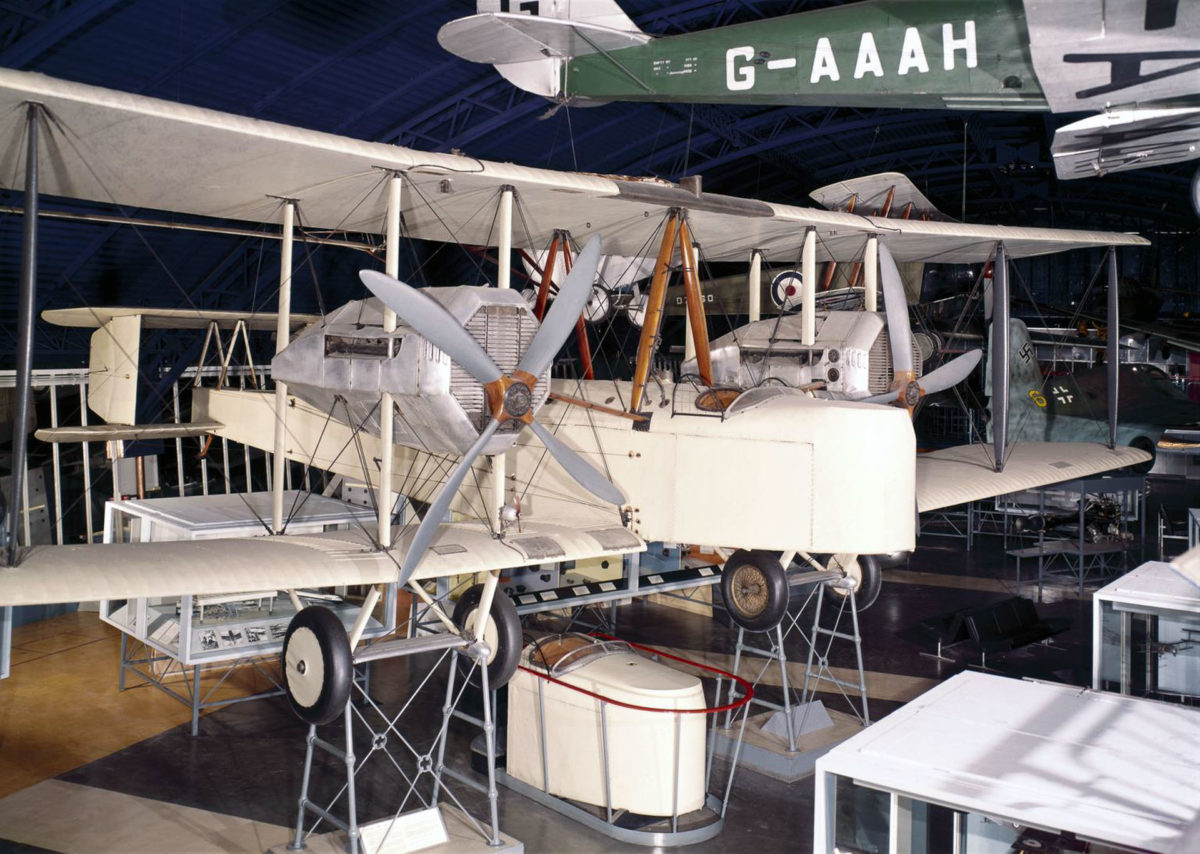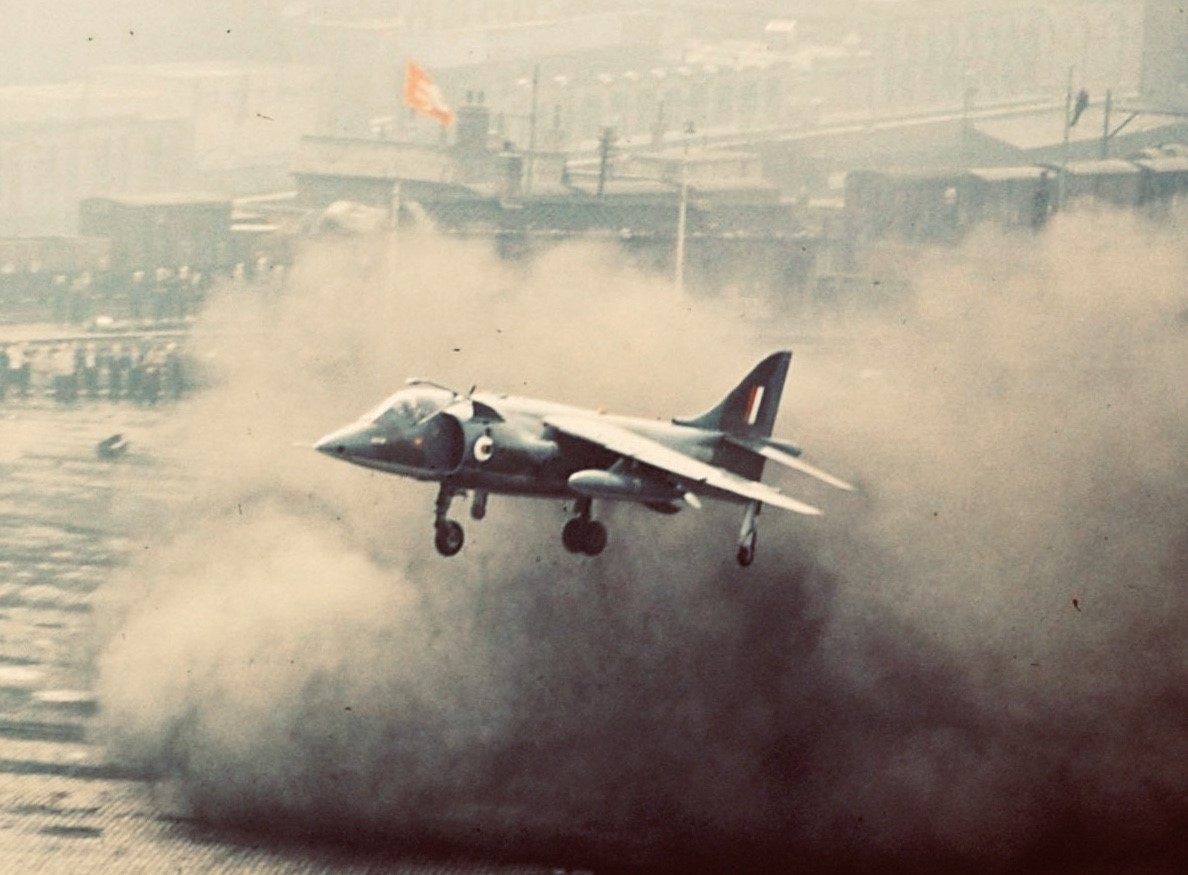Aviation anniversaries: Remembering Alcock and Brown

If you’re flying eastbound across the Atlantic tonight, stop and spare a thought for two English aviation pioneers who made the same journey exactly 100 years ago.
It was on the 14th June 1919 that John Alcock and Arthur Whitten Brown made the world’s first nonstop transatlantic flight, taking off from St. John’s, Newfoundland and landing the next day at Clifden, Connemara, County Galway, Ireland. They were chasing a prize offered by the Daily Mail newspaper for the first ever nonstop crossing of the ocean and it didn’t exactly go to plan. Hurrying to get away ahead of their rivals, the overloaded Vickers Vimy aircraft only just cleared the trees at the end of the runway. The whole journey was blighted by atrocious weather, with cloud, ice, snow and fog meaning they had to fly blind most of the way. The exhaust pipe broke making it so loud onboard they couldn’t hear each other talk, and the onboard generator failed so they had no radio contact or heating. In the awful weather they struggled to navigate and lost control of the aircraft twice, getting themselves into a dangerous spiral dive and nearly hitting the sea after confusing it for the horizon.

The flight took just under 16 hours with an average speed of 115mph, and ended with an undignified crash landing in a bog in County Galway (it looked like a smooth field from above). All a far cry from Economy Delight on a Boeing 787. As he stumbled from his aircraft John Alcock surprised the inquisitive locals by stating ‘yesterday we were in America’, a statement nobody would believe at the time. The flight was an extraordinary feat – the longest ever flight undertaken at that point, with big rewards for the victors. Alcock and Brown were presented with the prize money of £10,000 by Winston Churchill, then paraded through the crowd-lined streets of London and granted a place in the history books.

The original Vickers Vimy in the Science Museum, London.
The aircraft that Alcock (pilot) and Brown (navigator) flew was a Vickers Vimy, built in Surrey as a World War 1 bomber and now on display in the Science Museum in London. It was made of wood and fabric and powered by two Rolls Royce 360bhp engines (our 787s also have two Rolls Royce engines, but these generate about 50,000 bhp each). Over the years, many events have been held to remember the two aviators’ achievements, but among the most notable was a flight by Steve Fossett (of Virgin Atlantic Globalflyer fame) which recreated the flight using a Vickers Vimy replica, this time landing smoothly on a golf course.
Wacky Races
The most audacious celebration of the flight, however, was the totally bonkers, Wacky Races-esque Daily Mail Trans Atlantic Air Race of 1969. Fifty years on that deserves another look.
The newspaper organised a race for individuals from the top of the Post Office Tower in London to the top of the Empire State Building in New York. Many different categories and prizes were available, such as commercial flight, business jet, private pilot, plus fastest overall. These were the days when fuel was cheap and, as will become obvious, there weren’t so many rules and regulations around causing chaos in city centres! Among those taking part in the race were Anne Alcock, niece of Sir John, Stirling Moss, Clement Freud and Billy Butlin to name a few. And the prize for fastest had caught the attention of some hyper competitive folk in our armed services.

The winning time was recorded by Tom Lecky-Thompson, who ran from the top of the Post Office Tower to a waiting helicopter that rushed him to St Pancras station in the middle of London where his Harrier vertical take-off jet was waiting (imagine that now). He lifted off, covering the watching crowd in dust, and headed to New York. The Harrier needed to be refuelled in mid-air nine times before landing in Bristol Basin in New York. A motorbike* then took him to the Empire State Building for the final leg of the journey. The winning time, in total, was 6 hours and 11 minutes. Not bad.
First and fastest

This year, to celebrate both the Alcock and Brown and the Air Race anniversaries, Brooklands Museum in Weybridge, Surrey are presenting a First and Fastest exhibition. The display includes the replica Vimy flown by Steve Fossett and the Harrier flown by Tom Lecky-Thompson, which has recently been restored by Chris Wilson of Jet Art Aviation. At the exhibition opening party, Ian Black, one of our captains and author of several books on aviation history, went along to meet up with both Tom Lecky-Thompson and Chris.
While chatting over a glass of bubbly and a canapé, Ian and Chris came up with an idea to pay their own respects to the heroes of the Atlantic. They decided to retrace the steps of the original race and persuaded Tom to lend them the race card that he carried on the 1969 flight. This time there were no jump jets parked in central London, but Ian and Chris did photograph the race card, and a winner’s medal signed by Tom up the Post Office Tower, in the flight deck of a 787 and at the top of the Empire State Building.

Ian Black, Jim Provost and Chris Wilson. With thanks to Chris in staff travel and Paul in dispatch for helping with Chris’ flights.
“The Daily Mail air race gripped the nation for a few days back in 1969. I’m lucky enough to know some of the pilots that took part and even flew in one of the aircraft that was in the race,” said Ian. “Having attended the exhibition opening at Brooklands where I met Tom Lecky-Thompson, I got the idea to let the time-keeping card that he carried on his winning flight fly across the Atlantic once more. Along with Chris Wilson from Jet Art Aviation, we took the card from the Post Office Tower to the Empire State Building, this time on the flight deck of a Virgin Atlantic 787. It might not have been quite so quick but my co-pilot that day, Jim Provost, who used to fly Harriers, can attest to the fact that we used roughly the same amount of fuel as the Harrier would have done. With about 250 more passengers onboard”.

Tom Lecky-Thompson’s race card from the air race returns to the Empire State Building
Not only was the fuel burn of the single seater Harrier and the Boeing with 250 people onboard about the same but, and here’s the rub, our flight wasn’t that much slower either. Ian’s flight recorded a block time of 7 hours and 20 minutes, and although that doesn’t include the city centre bits, it’s really not bad for a couple of hundred people sitting comfortably, sipping drinks, eating lunch and watching movies – and it’s plenty of time to reflect on the legends that paved the way for millions of Atlantic crossings that have taken place ever since.
*a BSA Rocket 3 for motorbike geeks
Find out more about the Alcock and Brown flight d-brown/ or book yourself on a much more comfortable transatlantic flight to one of our many US destinations.

